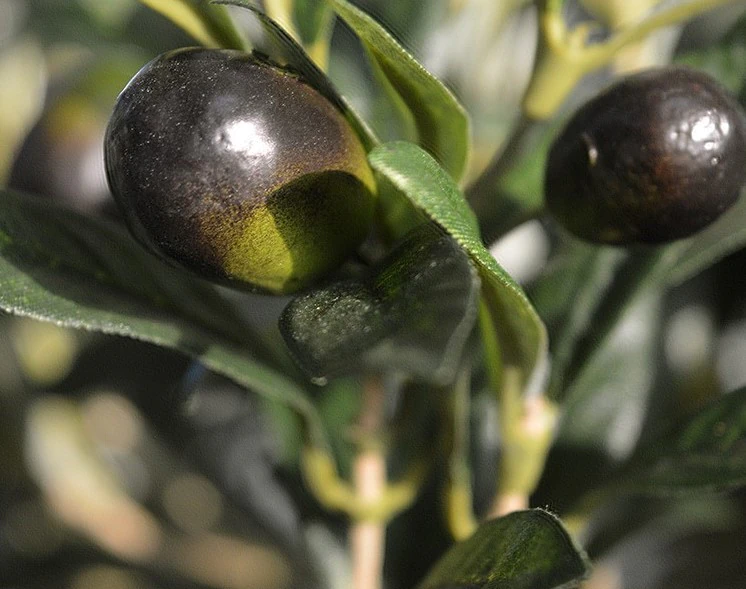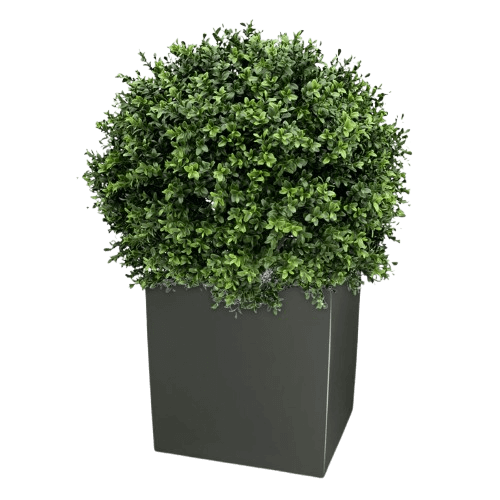Olive tree - the symbol of peace
The more we've researched about olive trees, the sooner it became clear that this particular tree could be the start of our next blog post. Olive trees have been highly valued since ancient times. In today's post, we're going to take a closer look at the history and interesting symbolism of it. Of course, the characteristics of the olive tree have a big part of it as well as its fruits and olive oil. Artificial olive trees are also a widespread species among our artificial plants and artificial trees.
About the history and symbolism of olive trees
The earliest records of olive tree cultivation date back to 5000 years ago in Crete. In antiquity, the olive tree was seen as a sacred tree symbolising peace, purity and wisdom. Many of us have seen olive branches being used to honour Olympic champions, and in ancient times also to honour war heroes. In ancient Greece, the olive tree was so sacred that only statues of gods could have been made from it. The olive tree was under the special protection of Athena and Zeus.
Characteristic of the olive tree
In this paragraph, we take a closer look at the characteristics of an olive tree. Olive tree or olea is a genus of evergreen deciduous trees and shrubs, of which 30 species are known, belonging to the olives family.
Olive tree is native to the Mediterranean, but is also found in the Middle East, South Africa and South-East Asia. Tropical climate and warmth of its surroundings are essential for olive trees. On the other hand, the soil is not particularly demanding. The olive tree tolerates even poorly fertile rocky soils quite well.
It is a very long-lived and slow-growing tree, which can last for thousands of years but does not grow taller than 7-15 metres. The tree is therefore rather low and stiffly built, with an uneven structure. This is particularly noticeable in the older specimens, which are characterised by many knots and gaps in the trunks. The trunk itself is light grey in colour.
The leaves of the olive tree are greenish and silvery on the upper side, while the underside may be lighter. The leaves are leathery, sharp-edged and quite narrow, averaging 8 cm in length and 1-3 cm in width. However, the small white flowers of the olive tree, with their four petals, are very fragrant.
Use of the olive tree
The wood on an olive tree is dense, heavy and hard, therefore often used for furniture and utility items, as it is ideal for carving. While still a beautiful ornamental tree, the most economically viable olive tree is the olea europaea, which has been cultivated as a fruit tree for thousands of years in Mediterranean countries. This continues to the present day - in Spain, Italy and Greece the olive tree is still most widely grown for its fruit. Quality olive oil is highly valued in the food industry, as well as in cosmetics, medicine, pharmaceutical companies and textiles manufactures.
European Union is the largest producer, exporter and consumer of olive oil, accounting for 69% of world production. The nine olive oil producing countries of the European Union have a combined olive area of around 5 million hectares. Spain alone accounts for more than half of the area under olive groves, and 63% of total production comes from there as well. The importance of olives and olive oil will now be discussed in more detail.
Olives
Hereby we're talking about something that is particularly important for Mediterranean countries. Most of us have probably seen and tasted olives, but a little description won't hurt. These fruits are round or plum-shaped and, in the case of most species, edible. The exact size, colour and flavour of the fruit will depend largely on the specific species. This fruit is rich in useful oils, with an oil content of 20-30%.
Have you ever wondered what is the difference between green and black olives? Both of them are the same fruit, and all olives are green in the beginning. The more the fruit ripens, the darker it gets. The green olives are picked before they are fully ripe, whereas the black olives are allowed to ripen on the tree and turn from green to black. On average, the olives ripen on the tree for 6-8 months.
Olives are not eaten immediately after harvesting, as they are simply too bitter. Before consumption, olives undergo some processing, such as canning or brining. In Mediterranean countries, olives are served as a starter before a meal. This is because olives stimulate the appetite and are a good snack because of their benefits. Did you know that of all the fruit picked, about 10% ends up as olives and 90% is used to make oil?

Olive oil
In this paragraph, we'll talk about how this 90% of olive production is used. Quality olive oil is a highly valued natural oil that's good for your health. Olive oil contains only 14% saturated fats and 73% is dominated by beneficial monounsaturated fatty acids. In addition, it contains vitamins A, E, K, D and antioxidants. Thanks to the latter, the oil also has anti-inflammatory properties. As it is a good fat, olive oil has not been associated with overweight or obesity.
The pressing of olive oil is a science in itself and consists of different stages. The oil is pressed from ripe fruit and is classified into five classes. The highest class is the most expensive and healthiest - extra virgin, or cold-pressed olive oil which is obtained after the first pressing and retains a large number of vitamins and minerals. It is used, for example, as a salad dressing because it does not tolerate heat. The second class is virgin, which is also unrefined, i.e. it is not produced using chemicals or heat. Virgin oil has a higher oleic acid content than the former and is also suitable for light frying and adding to baked goods.
The third category is refined olive oil, which has lower levels of vitamins and nutrients, loses the flavour of the first oils and can be used at higher temperatures. The fourth type is pure olive oil, the name of which would seem to imply that it is pure, but is in fact a blend of the first or second and third classes. In this oil, most of the nutrients are lost after processing and it is recommended for use as a massage oil and in hair and body care. The last type is pomace oil, which is made from a mixture of oil and water, i.e. the residues left over from the pressing process of the other types. Although edible, it could be used for other purposes.
In summary, the olive tree and its products play an important role in people's diets, medicine and various industries, as well as in gardens and parks. Olive trees have been sacred and revered for millennia. It would be wonderful to have such a precious tree in your own backyard. Unfortunately, the olive tree would not survive a colder climate, so a good alternative is to bring this magnificent plant into your home, room or office as an artificial tree.
In our online shop, the olive tree is a frequently found product. We offer a wide range of different variations of the artificial olive tree, from which everyone will find their favourite. For example, we have a three-metre high artificial olive tree, which is perfect for a higher room. There are also some olive tree bonsais, and some beautiful fireproof olive branches. There is plenty to choose from, and we encourage you to take a look around to see how accurately live trees can be reproduced with quality materials and the right skills.
ⓘ Need help finding the right product? Answer a couple of questions and receive our expert advice
Larger project at hand and prefer help from our experts? E-Mail us the details and we will be glad to help.

Answer 3 questions and we’ll select your perfect artificial plants.


 Austria
Austria  Belgium (Dutch)
Belgium (Dutch)  Belgium (French)
Belgium (French)  Croatia
Croatia  Estonia
Estonia  Estonia (Russian)
Estonia (Russian)  Finland
Finland  France
France  Germany
Germany  Greece
Greece  Italy
Italy  Ireland
Ireland  Latvia
Latvia  Lithuania
Lithuania  Netherlands
Netherlands  Poland
Poland  Portugal
Portugal  Slovakia
Slovakia  Slovenia
Slovenia  Spain
Spain  Sweden
Sweden  Turkey
Turkey 



